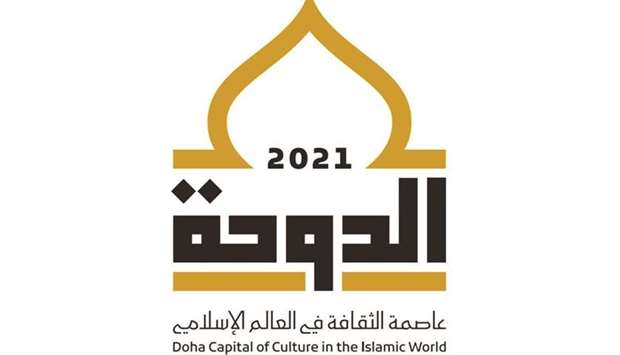The Qatari Forum for Authors organised a panel discussion titled 'Islamic Civilisation and Architecture', presented by researcher and plastic artist Mohamed Ali Abel, as part of the activities of Doha, Capital of Culture in the Islamic World 2021 initiative.
The lecturer reviewed the pivotal role of the State of Qatar and its positive impact in preserving Islamic architecture in the region, pointing to the mention of Qatar in the pre-Islamic Arab heritage as well as the Islamic heritage.
The researcher indicated that the old building system was very accurate, which is called the rules and laws of Gulf architecture with pebbles and mud, which are possibilities that only Gulf construction knows, explaining that Qatar revived the original scheme of Islamic mosques more than ten years ago.
He pointed to the most important historical mosques in Qatar, including Al Qebab Mosque or the Domes Mosque was called the Forty-Four Mosque because it contains 44 domes, built by Sheikh Jassim bin Mohammad, the founder in 1878, as this type of mosque is considered an authentic style.
Qatar's contributions to Islamic architecture are a testament to history, with monuments that clearly reflect the art of Islamic civilization, worthy of being the capital of Islamic culture, most notably the Education City Mosque, a modern building with an Islamic identity and character inspired by the character of Islamic architecture, consisting of the two high minarets and numerous Islamic inscriptions adorning its exterior and interior walls.
The Museum of Islamic Art, which is a beacon of Islamic heritage, is with external surfaces designed in the form of ancient Islamic palaces and the Mosque of Imam Muhammad bin Abdulwahhab and its external prayer squares and the domes that are successively laid in an ancient Islamic character, represent one of the monuments of Islamic architecture, and many other ancient and modern monuments. (QNA)
The researcher indicated that the old building system was very accurate, which is called the rules and laws of Gulf architecture with pebbles and mud, which are possibilities that only Gulf construction knows, explaining that Qatar revived the original scheme of Islamic mosques more than ten years ago.
He pointed to the most important historical mosques in Qatar, including Al Qebab Mosque or the Domes Mosque was called the Forty-Four Mosque because it contains 44 domes, built by Sheikh Jassim bin Mohammad, the founder in 1878, as this type of mosque is considered an authentic style.
Qatar's contributions to Islamic architecture are a testament to history, with monuments that clearly reflect the art of Islamic civilization, worthy of being the capital of Islamic culture, most notably the Education City Mosque, a modern building with an Islamic identity and character inspired by the character of Islamic architecture, consisting of the two high minarets and numerous Islamic inscriptions adorning its exterior and interior walls.
The Museum of Islamic Art, which is a beacon of Islamic heritage, is with external surfaces designed in the form of ancient Islamic palaces and the Mosque of Imam Muhammad bin Abdulwahhab and its external prayer squares and the domes that are successively laid in an ancient Islamic character, represent one of the monuments of Islamic architecture, and many other ancient and modern monuments. (QNA)



